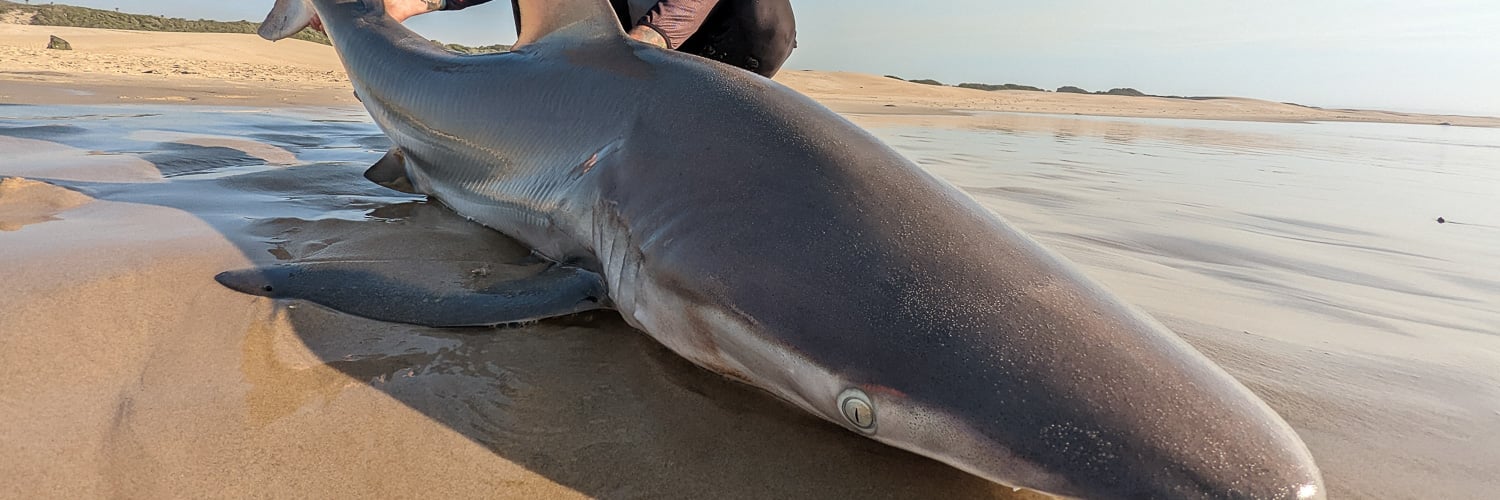

The Bronze Whaler shark, also known as the Copper or Narrowtooth shark, can be found in all manner of different waterways, from brackish rivers and estuaries to shallow bays and harbours to offshore waters with depths of over 100m or more. It’s the only member of its genus primarily found in temperate rather than tropical waters.
The Bronze Whalers, given their name because they would gather in large numbers around whale carcasses after being harpooned, are fast and active and maybe encountered alone, in pairs, or loosely organized schools containing up to hundreds of individuals. They can grow over 3 metres in length and over 300lb in weight, with an average size of around 100lb. They feed more towards the bottom of the water column on a diet of bony fishes, squid, cuttlefish and octopus. Off South Africa, they’re closely associated with the annual Sardine run, involving millions of Southern African Pilchards.
Often found in the surf zone, the Bronze Whaler provides a real challenge for the saltwater shore fishing angler. They’re top of the food chain, and to target them, you need big meaty baits, some super strong tackle and a good level of fitness. They’re a mighty powerful fish, and once hooked, there’ll often run back out to sea; sometimes, there’s simply no stopping that initial run.
Below are the top destinations in the world for Bronze Whaler Fishing.
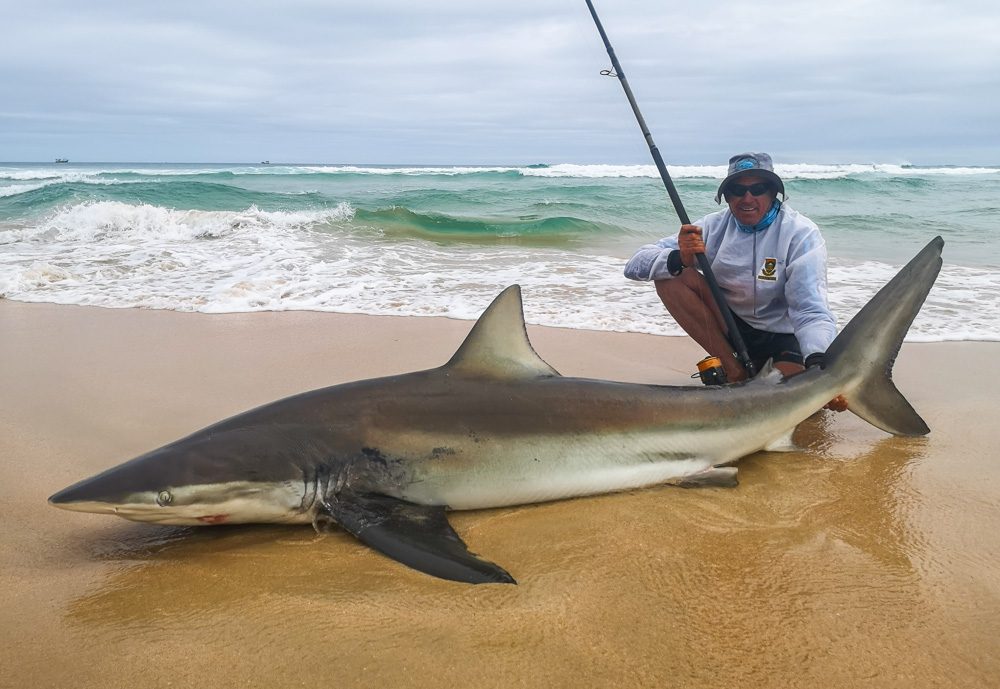

We are pleased to offer you the opportunity to catch some of South Africas biggest and toughest species from the shore. Here at the beautiful destination of Jeffrey's bay, you will be fishing from the shore with a very experienced guide who will aid you while on your holiday to land some of the Indian Oceans most hard fighting species.
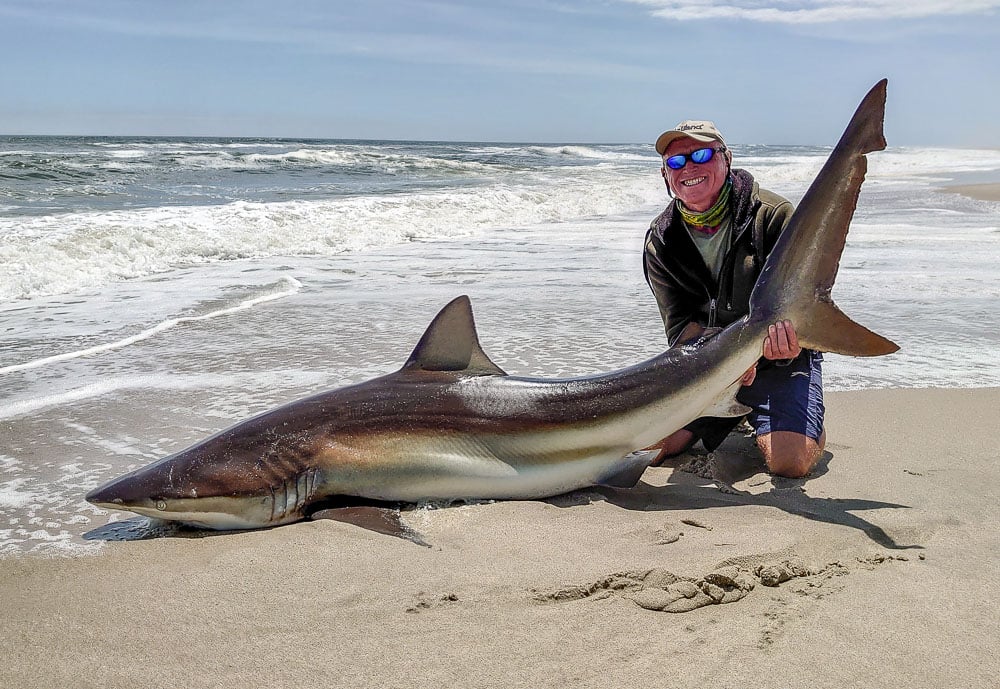

The Namibian coast boasts one of the largest populations of Bronze Whaler Sharks in the world. These huge sharks can reach well over 400lbs. You will be targeting them from the shore on heavy surfcasting tackle and bait. The Bronze Whaler is immensely strong and puts up one of the best shore fights you will ever have.
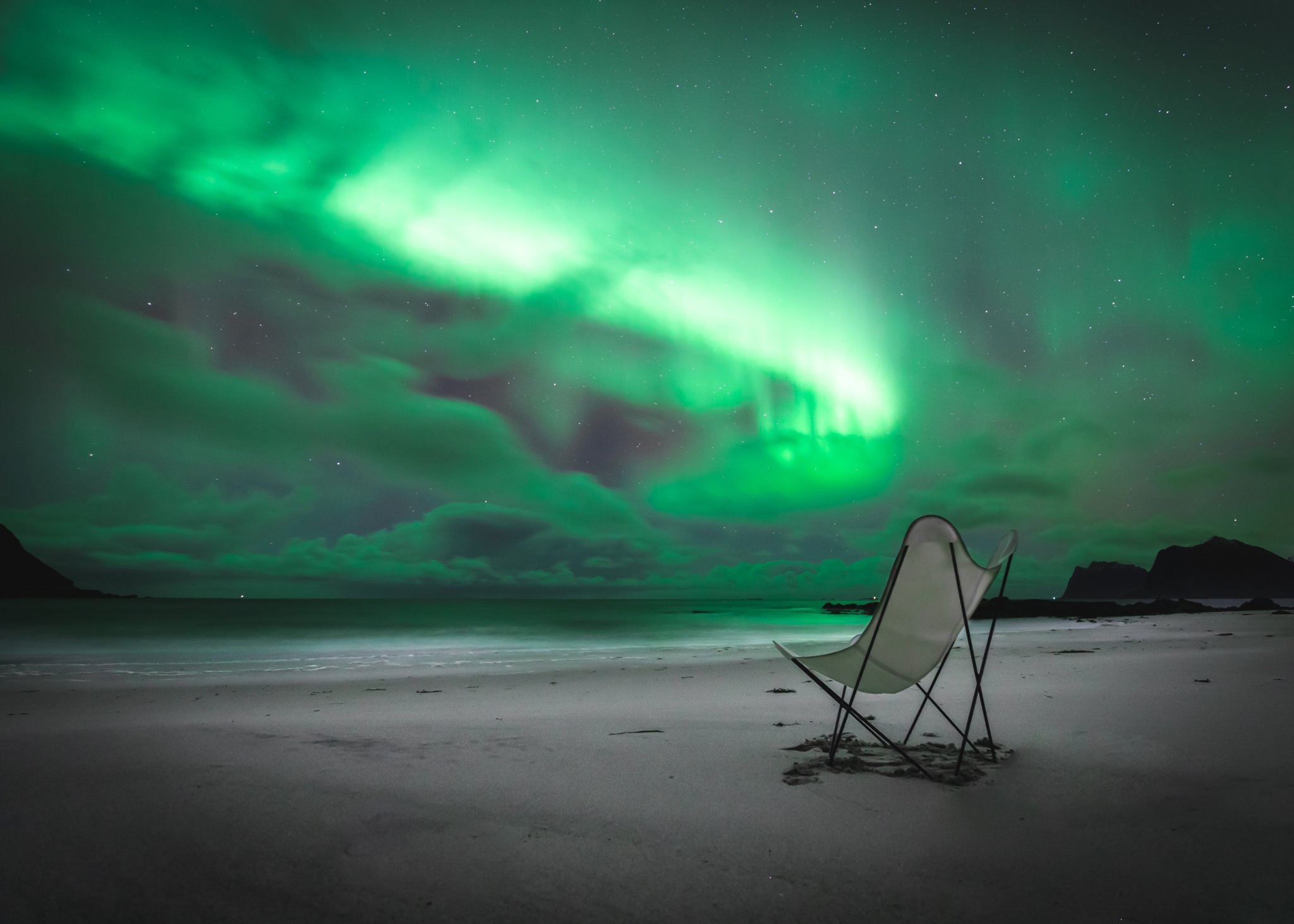

Average Customer Satisfaction Score 89%
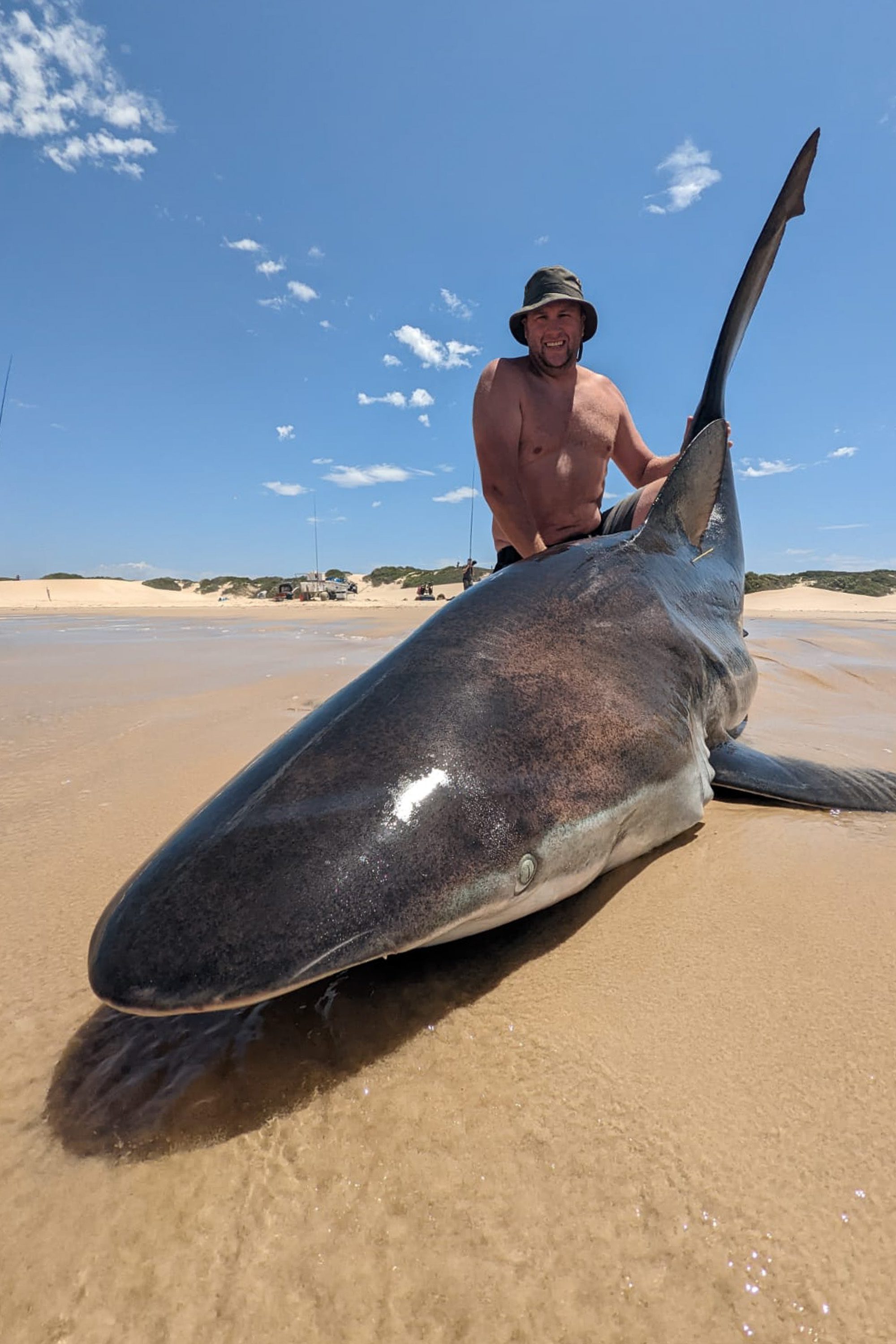

Name: Bronze Whaler Shark
Also Know As: Bronzie, Copper Shark, Whaler Shark, Narrowtooth Shark
Scientific Name: Carcharhinus brachyurus
Bronze whalers, also known as Copper Sharks, are a species of requiem shark known for their distinctive bronze, coppery colouration that fades to a white underbelly. They are a large, mighty Shark characterised by a long, pointed snout, large pectoral fins, and a unique dorsal fin slightly rounded at the tip. Their sleek, streamlined body allows them to swim swiftly through the water, making them an efficient predator.
Their mouth has short, subtle furrows at the corners, containing 29–35 upper tooth rows and 29–33 lower tooth rows. They feed towards the bottom of the water column, consuming almost anything that gets in their path, including Squid and Cuttlefish and a wide variety of bony fishes, like Mullet, Bream, Sardines and Anchovies.
They may be encountered alone, in pairs, or in loosely organised schools containing up to hundreds of individuals. Some aggregations form for reproductive purposes, while others form for food concentrations.
Bronze Whaler Sharks are well-distributed globally, with populations in the northeastern and southwestern Atlantic, off southern Africa, in the northwestern and eastern Pacific, and around Australia and New Zealand. The species can be found in brackish rivers and estuaries, shallow bays and harbours, and offshore waters 100m+ deep or more.
South Africa is one of the best places in the world for travelling anglers to catch a Bronze Whaler. Every year, big schools of sharks gather to follow the ‘run’ of Southern African Pilchards from the Eastern Cape. These plentiful bait fish comprise 69–95% of their diet. In this region, the gathering of millions of forage fish attracts a multitude of predators, including several species of sharks, of which Bronzies are the most numerous.
Along the Skeleton Coast of Africa is also a hotspot, with Namibia being one particular country famous for producing large numbers of these fish to specimen proportions.
If you’re travelling to Namibia to fish for Bronzies from the shore, you may find this blog useful: Preparing For A Week Of Shark Fishing In Namibia.
Our top Bronze Whaler Shark fishing tours:
Hosted Shark Fishing South Africa
Bronze Whaler Shark Fishing Namibia
Catching Bronze Whaler Sharks, apex predators that dominate their marine ecosystems, requires strategic preparation and specific gear due to their preference for substantial, meaty baits. Anglers can pursue these formidable sharks from shorelines and boats, though shore fishing remains the favoured approach due to its accessibility and unique challenges. A robust, stiff rod is essential to combat the Bronze Whaler’s characteristically long and powerful runs, paired with large reels spooled with either braided or monofilament line.
Optimal bait consists of large, blood-rich chunks of fish carefully prepared to entice these predators. These then get deployed through traditional casting methods or innovatively delivered beyond the breakers using drones or remote-controlled boats, enhancing the bait’s reach and effectiveness. Combined with patience and resilience, mastery of these tactics significantly increases the chances of successfully landing a fish. All our guides at our shore fishing destinations are experts in fishing for Bronzies and will do their utmost to ensure you have a fishing experience that will live long in the memory.
We’ve written a Shark fishing blog packed with tips, which will help you get more out of your holiday. You can read it here: Shark Fishing Tips When Fishing From The Shore.
Bronze Whaler Sharks are impressive marine creatures that can achieve considerable sizes, marking their significant presence within the ocean’s hierarchy. Adult Bronze Whalers typically reach lengths of up to 3.5 metres, with some exceptional individuals even surpassing this size, and they can weigh as much as 300kg or 660lb. This notable size underscores their predatory capabilities and importance in maintaining the balance within marine ecosystems, serving as a testament to their evolutionary success in diverse oceanic habitats.











